Last Chance to Catch NYC's Holiday Notalgia Train
We met the voices of the NYC subway on our nostalgia ride this weekend!


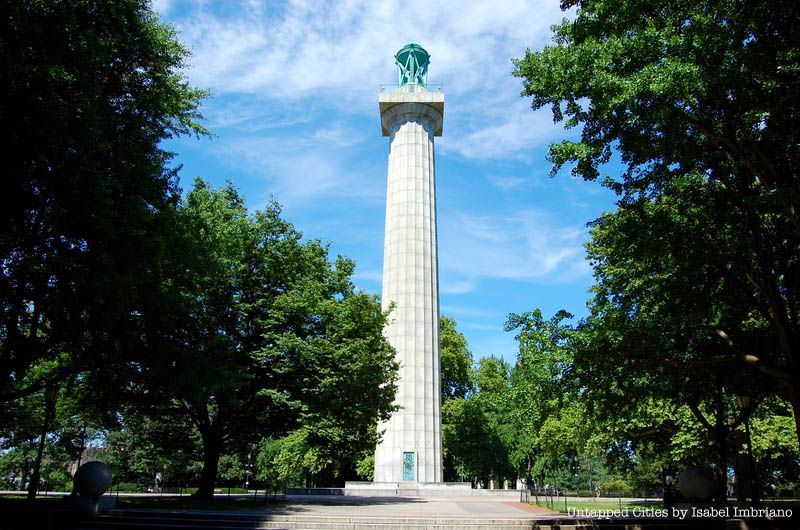
Located on the edge of Fort Greene and Downtown Brooklyn lies a 30-acre park that dates back to the Revolutionary War. Fort Greene Park is Brooklyn’s oldest park and it has centuries of history to its name. Here are ten things you might not know about the historical park.
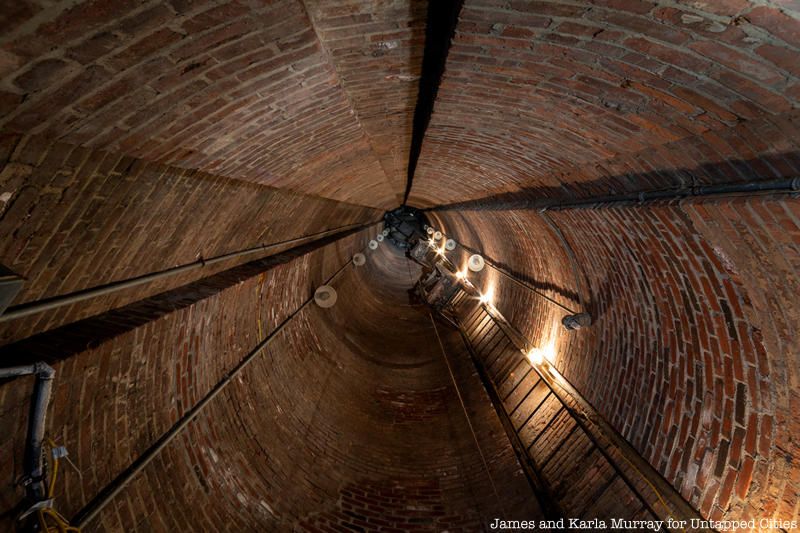
The Prison Ship Martyrs Monument, located in the central Doric column at Fort Greene Park, used to contain a double-helix stairwell when it was first constructed. It originally led to an observation deck on top when the monument first opened. The staircase was eventually replaced by an elevator, but this was also later removed after falling into disrepair.
Now, there is only a single iron ladder, with regularly spaced landings, which leads to the top. Today, the interior and observation deck of the Prison Ship Martyrs Monument are normally closed to the public.
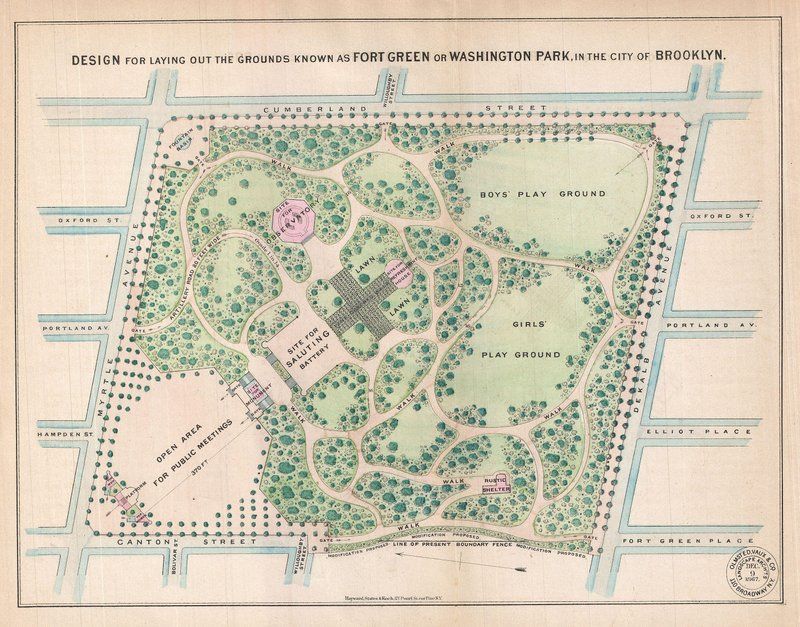
1867 plan for Fort Greene Park by Olmstead and Vaux
The city of Brooklyn bought the land that Fort Greene Park is located on in 1847 to preserve it as park and named it Washington Park. It was the first park designated by the city of Brooklyn. Just 20 years later, the famous designers of Central Park and Prospect Park, Frederick Law Olmsted and Calvert Vaux reimagined a new design for Washington Park that would include a tomb for the prison ship martyrs.
Later, the park would be renamed Fort Greene Park in 1896 and the Prison Ship Martyrs Monument would be the last installment of the park in 1908.
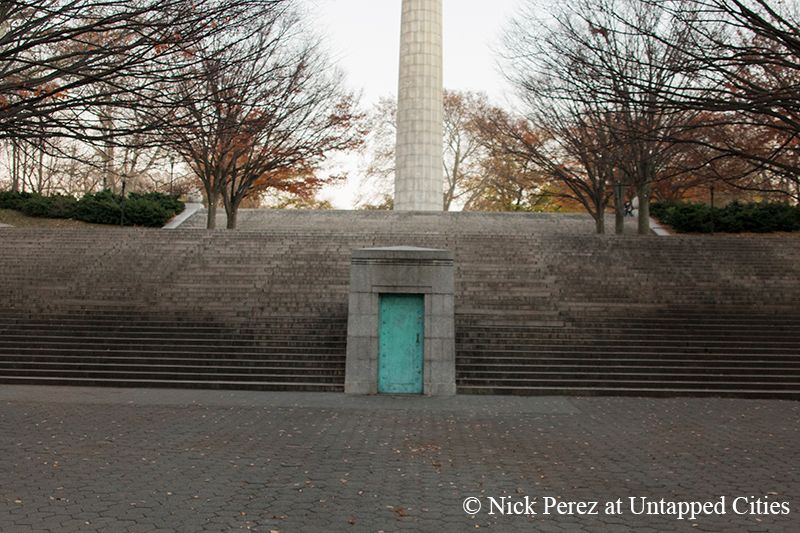
Fort Greene Park was originally built as Fort Putnam in 1776 under the supervision of Major General Nathanael Greene atop what is now the high ground of Fort Greene Park. The fort was most likely named after Colonel Rufus Putnum, who was the chief engineer responsible for fortifying Long Island.
The fort was taken over by the British after the Battle of Brooklyn. Fort Putnam was rebuilt for the War of 1812 and was renamed Fort Greene. In 1845, the city of Brooklyn turned the land into Washington Park, which was later renamed Fort Greene Park.

Installed in 1908, the 149-foot Prison Ship Martyrs Monument was erected to remember the more than 11,500 martyrs who died on British war ships in Wallabout Bay during the Revolutionary War. The notorious conditions aboard the ships, equally bad or worse than those in the sugar house prisons on land, was recently captured in the AMC Revolutionary War spy drama, TURN. Those who died on ship prisons like the HMS Jersey, the Falmouth and more, were thrown overboard or ferried to the Brooklyn shore.
Bodies were buried by Brooklyn residents in shallow graves in what is now the Brooklyn Navy Yard. Through erosion, bones began to emerge on the shoreline by 1808. The Tammany Society made the first motion that year to find a formal burial ground for the prison ship martyrs, a quest joined by Brooklyn citizens over the next few decades.
The current monument sits on the crypt where the bodies still remain, though those buried here represent only a portion of those that died aboard the prison ships. If you do wish visit the remains, The Society of Old Brooklynites hosts visits to it once a year but you have to be member of the society to enter. The only requirement is that you have to have lived or worked in Brooklyn for the past 25 years.
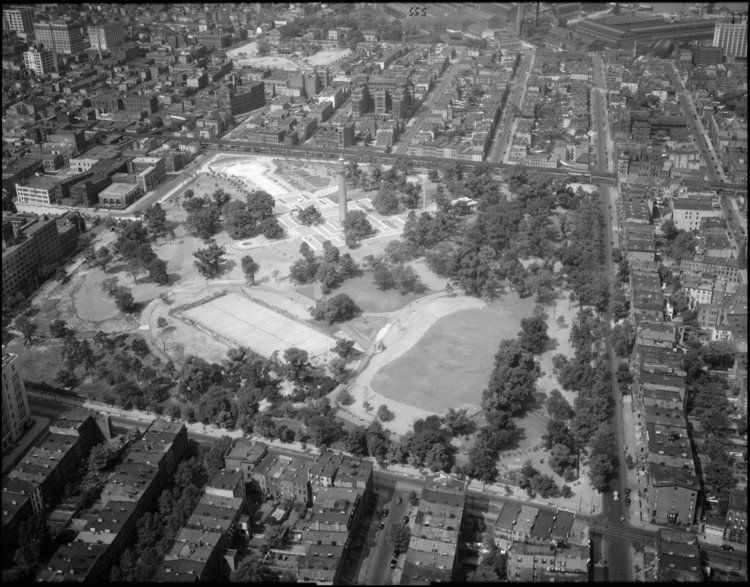
Walt Whitman, who was editor of the Brooklyn Daily Eagle from 1846 to 1848, used his influence to help start the construction of a public green space in Brooklyn. More than just an editor, he also contributed 800 pieces for the paper, including poems, editorials and news stories. In one instance, Whitman argued for “a place of recreation… where, on hot summer evenings, and Sundays, they can spend a few grateful hours in the enjoyment of wholesome rest and fresh air.”
According to the landmarks designation report for the Fort Greene Historic District, Fort Greene Park, “begun in 1848…was largely the product of Brooklyn Daily Eagle editor, Walt Whitman –who for two years tenaciously kept the issue before the minds of the people of the city. Whitman had recognized and voiced the recreation needs of the growing populace of East Brooklyn where ‘the mechanics and artificers of our city, most do congregate.'”
Last year, artists Jeff Greenspan and Andrew Tider installed a statue of Edward Snowden on one of Fort Greene Park’s smaller pillars located near the Prison Ship Martyrs Monument. The statue was taken down the same day by New York City Department of Parks & Recreation officials and returned to Greenspan and Tider after their lawyers sued to get it back.
The NYPD fined Greenspan and Tider $50 for illegally trespassing in the park at night. The next day, Tider and Greenspan put a hologram of the statue in the same place.
In 2016, the bust was shown as part of the Agitprop! exhibit at the Brooklyn Museum.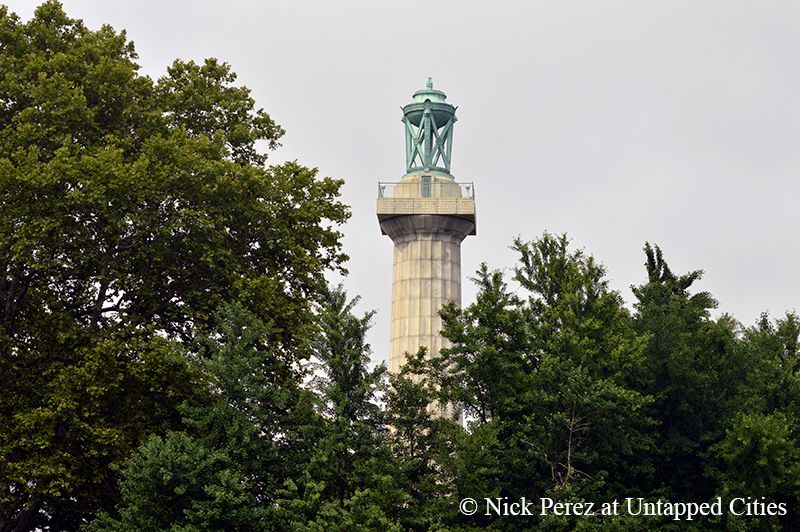
The urn that sits on top of the Prison Ship Martyrs Monument is 22.5 feet tall and weighs seven and a half tons, but not that many people have not taken a closer look at it.
The design was made by the sculptor Adolph Alexander Weinman, a German immigrant, and it was fabricated at the Whale Creek Iron Works Greenpoint, Brooklyn out of copper. It is topped by a glazed lid. The urn was only decorative and never functioned at any point of its inception. He also designed the four eagles the surround the plaza.
Weinman made his mark in other places in New York City as well, and designed the sculptures Day and Night that surrounded the clock at the original Pennsylvania Station and the sculptures at New York City’s Municipal Building.
Learn about Weinman on our popular Remnants of Penn Station tour, which will return for the anniversary of the demolition of Penn Station this October:
Tour of the Remnants of Penn Station
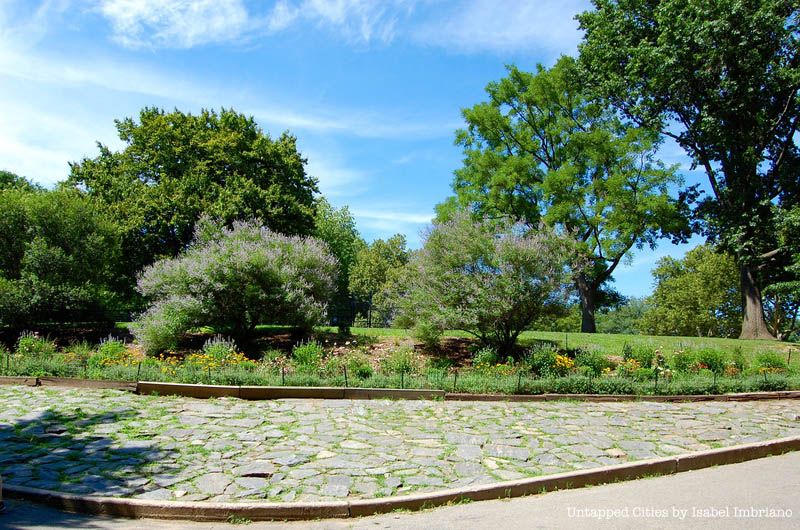
To celebrate the United States’ 200th birthday, King Juan Carlos II of Spain paid an official visit to Fort Greene Park during the Bicentennial Year of 1976. He placed a commemorative plaque that urged for more recognition for Fort Greene Park and noted that the park holds a special place for Brooklyn and its residents. Out of the 11,500 martyrs who died in the Revolutionary War, King Juan Carlos II wanted to honor the 700 Spanish martyrs who gave their lives.
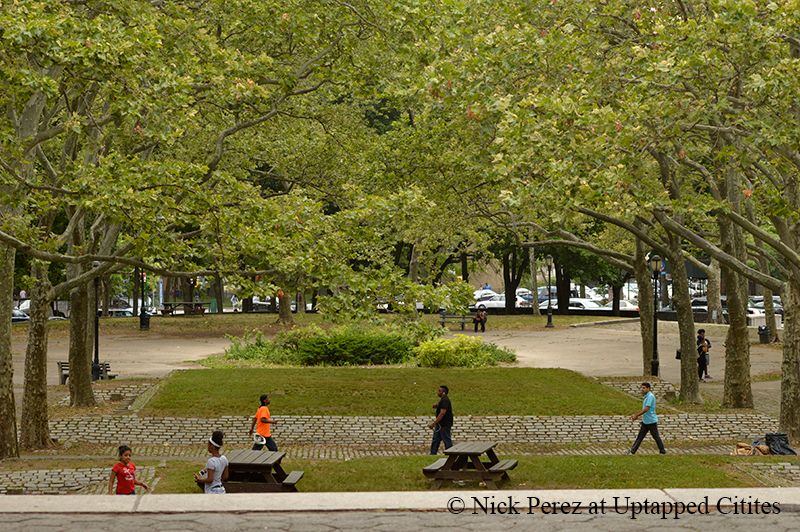
Located within Fort Greene Park, the Revolutionary Garden is funded by the Fort Greene Park Conservancy and is mostly run by volunteers. The garden has grown anything from cucumbers to lettuce and flowers. Board members of the Fort Greene’s conservancy teaches workshops in gardening and the fruit of their labor blooms in the end. Some of the products is sold at Fort Greene Park Greenmarket that takes place every Saturday from 8 am to 4 pm.

Photo from Library of Congress
Olmstead and Vaux were known for their naturalistic landscape strategies, as evidenced in their designs for Central Park and Prospect Park. McKim, Mead & White, the architects of the original Pennsylvania Station, were hired after more remains were found in 1899 at the Brooklyn Navy Yard. The architects put forth a more monumental and Neoclassical design which they hoped “better expressed the character of the nation.”
The firm McKim, Mead & White is responsible for the monumental staircase, the terraces, and the Prison Ship Martyrs Monument, which were unveiled in 1908. Yet, as the Landmarks Preservation Commission notes, the layout of the staircase “conforms to the original layout determined by Olmsted and Vaux.” In addition, the variety of plantings at Fort Greene Park “prove the value of the landscape architects’ original selection.”
With its rich history, Fort Greene Park still serves nearly 200,000 Brooklyn residents. You may visit the park all year round, but it closes every night at midnight.
Next check out The Top 10 Secrets of the FDR Drive and Visions of Confinement at Hunter East Harlem Gallery Explores Female Imprisonment in American.
Subscribe to our newsletter